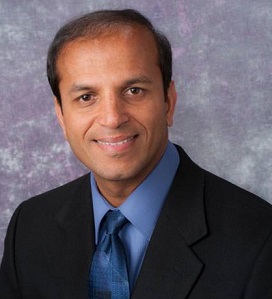
Living-donor liver transplant offers numerous advantages over deceased-donor transplant, including better three-year survival rates for patients and lower costs, according to new research from the UPMC Thomas E. Starzl Transplantation Institute and the University of Pittsburgh School of Medicine.
The findings, published online in the Annals of Surgery, highlight living donation as a viable, if not preferable, option for the more than 14,000 people currently on the waiting list, as well as many more who never qualify to be on the list under current allocation rules.
About 8,000 liver transplants are performed each year, according to the Organ Procurement & Transplantation Network, and living-donor liver transplant comprises less than 5% of that total. Additionally, about 25% of people on the waiting list die each year waiting for a transplant, and those who eventually receive a transplant often have a lengthy period on the waiting list, resulting in poorer health at the time of transplant.
“The consequences for patients on the waiting list can mean the difference between life and death because the longer they are waiting, the sicker they become,” said Abhinav Humar, MD, chief of transplant services at UPMC, clinical director of the Thomas E. Starzl Transplantation Institute and lead author of the study. “Living-donor liver transplants, in tandem with deceased-donor liver transplants, represents an opportunity to significantly decrease the risk of wait-list mortality, and gives us the ability to transplant a person sooner.”
The retrospective review of 245 adult living-donor liver transplants and 592 deceased-donor liver transplants performed over the last 10 years at UPMC—which has the country’s largest living-donor liver transplant program—compared survival rates and other outcomes such as recovery times, complications, costs and resource utilization. The patients were followed for at least two years post-transplant.
Of those comparisons, three-year patient survival outcomes were superior in living-donor liver transplant recipients—86% versus 80%. Living-donor liver transplant recipients overall had about a 5% survival advantage over deceased-donor recipients. Patients who received a liver from a living donor had a hospital stay of 11 days as compared to 13 days for those who received a liver from a deceased donor, had less likelihood of intraoperative blood transfusion (53% compared to 78%) and less likelihood of the need for post-transplant dialysis (1.6% versus 7.4%). Hospital costs related to transplant also were 29.5% lower for living donor recipients. For the living-liver donor, there were no mortalities observed, and the overall complication rate was 20%.
“Living-donor liver transplant should be considered the first and best option for most patients with liver disease,” Dr. Humar said. “It is not only an option for those on the waiting list but could perhaps offset the fact that not everyone who may benefit from transplant qualifies to receive a deceased-donor transplant based on today’s current rules of allocation.”
Given the advantages, UPMC in recent years expanded its living-donor liver transplant program. In 2018, living-donor transplants comprised about 54% of the program’s total number of liver transplants compared to the national average of around 4%. UPMC’s transplant rate also increased from 45 out of every 100 persons on the program’s waiting list in 2015 to around 88 in 2018. The program has led the country in living-donor liver transplants the past two years and is the only center in the U.S. to perform more living- than deceased-donor transplants.
“It is unclear why the number of living-donor liver transplants is so low in the United States,” said Amit Tevar, MD, associate professor of surgery in the Pitt Department of Surgery and director of the Kidney and Pancreas Transplant Program at UPMC. “Fewer than 15 U.S. programs did more than 10 living-donor liver transplants in 2018, and this is surprising given the number of analyses nationwide like this that have now been reported.”
Additional authors on the study include Swaytha Ganesh, MD, Dana Jorgensen, PhD, MPH, Armando Ganoza, MD, Michele Molinari, MD, and Christopher Hughes, MD, all of Pitt.
Read more…
UPMC/PittHealthSciences Media Relations News Release
Abstract (Adult living donor versus deceased donor liver transplant (LDLT Versus DDLT) at a single center. Time to change our paradigm for liver transplant. Humar, Abhinav MD; Ganesh, Swaytha MD; Jorgensen, Dana PhD, MPH; Tevar, Amit MD; Ganoza, Armando MD; Molinari, Michele MD; Hughes, Christopher MD. Annals of Surgery: July 10, 2019.)
